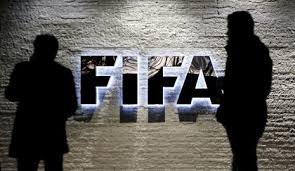By David Owen
March 18 – FIFA have reported a net loss of $191.5 million for 2017, the third year in the four-year World Cup cycle that will culminate with Russia 2018 this summer.
It could have been a great deal worse. A detailed budget for 2017 included in last year’s financial report had totted up to a loss of $489 million before tax and financial outturns. As it was, a revenue windfall relating to licensing rights, which may have been connected to gaming though it is difficult to be sure from the explanations given, coupled with a multiplicity of small factors on the cost side, combined to produce a smaller deficit than had been anticipated.
Revenue from licensing rights has already comfortably exceeded budget for the World Cup cycle with a year to go. This contrasts with the main revenue streams – TV and marketing rights. So far only 19% and 36% of their respective budgets for the full cycle have actually been counted in revenues over the past three years.
FIFA says, however, that 98% of targeted overall revenue for 2015-18 had been contracted by the balance-sheet date. A new revenue standard adopted by the organisation means that the vast majority of revenue and expenses related to Russia 2018 will be allocated to the current financial year, which ought to produce a very large surplus.
FIFA felt able to release $65 million of the provisions inserted to cover the various “legal matters” it is involved with. At December 31, there were still $197 million of provisions in place. Legal and governance costs were also well down on 2016 levels, with those related to investigations plunging from $50.5 million to $14.4 million.
Football governance costs came in well below budget partly because FIFA’s Early Warning System match-fixing detection operation was outsourced. It emerged in early 2017 that FIFA had decided to hire the specialist firm Sportradar in place of its own detection division.
Last year’s Confederations Cup suffered from low ticket sales, producing revenue of only $22 million, which looks like it was just under half of what was budgeted. Expenses for the competition were put at $142 million.
The 2017 Club World Cup did rather better-than-expected, however, with expenses put at $21 million and revenue at $37 million.
By the end of the year, FIFA’s reserves had fallen (doubtless temporarily) below the $1 billion mark to $930 million.
FIFA now says it is on track to exceed its revenue budget of $5.66 billion for the 2015-18 cycle. It is worth recalling how relatively undemanding that should have been. Going back to the 2014 accounts, one sees that total revenue for the 2011-14 cycle weighed in at $5.72 billion. Of this, $5.14 billion was event-related, with $2.48 billion attributable to TV rights and $1.63 billion to marketing rights, of which $1.58 billion was linked to the 2014 World Cup. Four years on, the 2015-18 marketing rights budget is only $1.45 billion.
While FIFA has been running hard to stand still in revenue terms, the Premier League, for example, achieved a 70% increase in the valuation of its domestic broadcast rights for the three years from 2016-19.
The world governing body has now set a revenue budget for the next World Cup cycle, culminating with Qatar 2022, of $6.56 billion.
Less than surprisingly, with a FIFA Presidential election set for next year, a big boost is planned in development and education spending. The budget for competitions and events, by contrast, is to be held virtually flat.
FIFA is saying that the low number of venues and reduced local travel requirements associated with Qatar 2022, as well as the “restructuring of operational management” are helping to contain costs. Overall savings in comparison to this year’s tournament are put at about $300 million.
Nor is there to be a repetition of the three-fold increase in the sum committed to the Club Benefits Programme, which rewards employers of players involved in the World Cup tournament, notably, though far from exclusively, the big European super-clubs. After jumping from $70 million for Brazil 2014 to $209 million for Russia 2018, the same amount – $209 million – has been written into the budget for Qatar 2022.
Contact the writer of this story at moc.l1714168996labto1714168996ofdlr1714168996owedi1714168996sni@n1714168996ewo.d1714168996ivad1714168996

